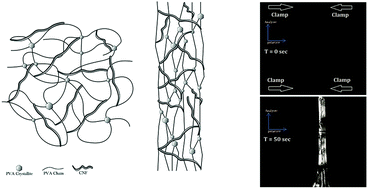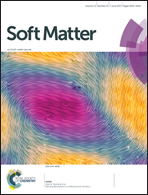Strain-induced stiffening of nanocellulose-reinforced poly(vinyl alcohol) hydrogels mimicking collagenous soft tissues†
Abstract
Soft tissues possess remarkable mechanical strength for their high water content, which is hard to mimic in synthetic materials. Here, we demonstrate how strain-induced stiffening in hydrogels plays a major role in mimicking the mechanical properties of collagenous soft tissues. In particular, nanocellulose reinforced polyvinyl alcohol (PVA) hydrogels of exceptionally high water content (90–93 wt%) are shown to exhibit collagen-like mechanical behavior typical for soft tissues. High water content and co-existence of both soft and rigid domains in the gel network are the main factors responsible for strain-induced stiffening. This observed effect due to the alignment of rigid components of the hydrogel is simulated through modeling and visualized through strain-induced birefringence experiments. Design parameters such as nanocellulose aspect ratio and solvent composition are also shown to be important to control the mechanical properties. In addition, owing to their transparency (90–95% at 550 nm) and hyperelastic properties (250–350% strain), the described hydrogels are promising materials for biomedical applications, especially in ophthalmology.



 Please wait while we load your content...
Please wait while we load your content...